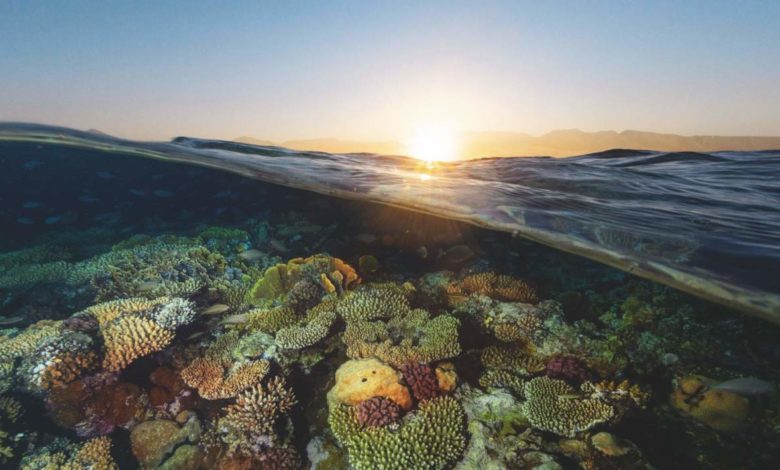Saudi: How sustainability shapes the future of luxury

Gulf Insider interviews Brendan Jack, Chief Sustainability Officer at AMAALA. The below discussion explores the importance of linking sustainability in AMAALA’s core business operations as well as its innovative initiatives in the pipeline.
Can you tell us more about AMAALA and its sustainable initiatives?
AMAALA is a flagship Vision 2030 project designed to help realize Saudi Arabia’s ambition for a diversified economy. The ultra-luxury destination sprawls across 4,155 sqkm in the Prince Mohammad bin Salman Royal National Reserve. Three dedicated communities – Triple Bay, Coastal Development and The Island – focus on creating transformative personal journeys inspired by wellness, arts, culture, and the purity of the Red Sea. Pristine beaches, crystal clear waters and imposing mountain ranges surround the destination, housing a variety of delicate ecosystems including thriving coral reefs.
As the only Red Sea development located inside the Prince Salman Royal National Reserve, it was extremely important for us to protect, promote and even enhance environmental and human wellbeing at every step. As such, we are working tirelessly and passionately to deliver carbon-neutral operations by 2025; sustainably source 50% of all food by 2030; and contribute to zero waste to landfill. By creating a world-leading destination that allows visitors to both satisfy their thirst for travel and mitigate negative impacts on the enviroment, AMAALA offers a tantalizing proposition: guests feel that their stay is an investment in a sustainable and regenerative future.
To achieve this, we have spent considerable time reviewing the area’s natural and and cultural heritage to plot a careful way forward. Before we completed the master plans, we worked closely with our strategic partners on a thorough marine environmental zoning project. This helped us understand the true potential of our environmental landscape and identify areas that require conservation and protection, and which others would be suitable for sensitive development. We then undertook a six-month integrated sustainability strategy project to help us crytallize our key priorities into 129 initiatives – from coral reef and Marine Protected Areas (MPA) management to iconic species protection and fighting plastic pollution.
We are also exploring nature-based solutions to counterbalance CO2 emissions – such as carbon insetting projects. The goal is to balance out all carbon produced by AMAALA within its boundary through renewable power supplies and enhance natural ecosystems that will absorb and sequester carbon.

How do these initiatives mirror Saudi Arabia’s sustainable development goals?
At AMAALA, we are reimagining the future of sustainability for the Kingdom and are actively aligned with the Saudi Green Initiative (SGI). The initiative has a number of goals, two of which are for the energy mix in the Kingdom to reach 50% renewables by 2030 and achieve a reduction of carbon emissions by more than 4% of global contributions.
AMAALA shares the ambitions of its sister project, The Red Sea Project, to deliver 100% renewable energy across the destination. In November 2020, The Red Sea Project concluded a PPP agreement for its Utilities under which the first phase of the development will have no connection to the national grid. The project will house the world’s largest battery storage facility as part of this effort. The resulting savings in CO2 emissions to the atmosphere will be equivalent to nearly half a million tons each year.
Following in these footsteps, AMAALA is moving ahead in identifying potential partners and delivering clean energy 24/7 at the destination. This renewable power supply, coupled with enhancements to the natural ecosystems that absorb and sequester carbon, will help us to balance out all carbon produced within the destination’s boundary.
Our alignment is helping to place the Kingdom at the heart of regional efforts to meet the United Nations’ Sustainable Development Goals (SDGs) and the circular carbon economy (CCE) targets to manage greenhouse gas emissions across the world. In fact, we have considered all 17 SDGs in all of our planning and decision-making across the business.
How did the COVID-19 pandemic impact your key initiatives?
With a limited workforce on-site during 2020, we were able to establish a Covid-free bubble following stringent guidelines as mandated by the Ministry of Health. By limiting the movement of workers and staff, supplemented with robust testing and quarantining, we were still able to progress with groundworks at Triple Bay. As restrictions started to lift, we were able to increase the workforce and progress the works at a faster pace at the airport and undertake marine survey works in preparation for marina construction.
As part of our ongoing efforts to ensure the safety and well-being of all those who work on or interact with our business operations, and in accordance with national workplace vaccination mandates, we also launched a project site vaccination program in June 2021 to administer vaccines to our employees, consultants, and contractors working onsite.
We are also proud of our milestone achievement of three million safe working hours from September 2019 to July 2021 across the project site. This achievement follows our strict adherence to the highest standards of health and safety in line with globally recognized standards in worker safety set by the International Organization for Standardization.




